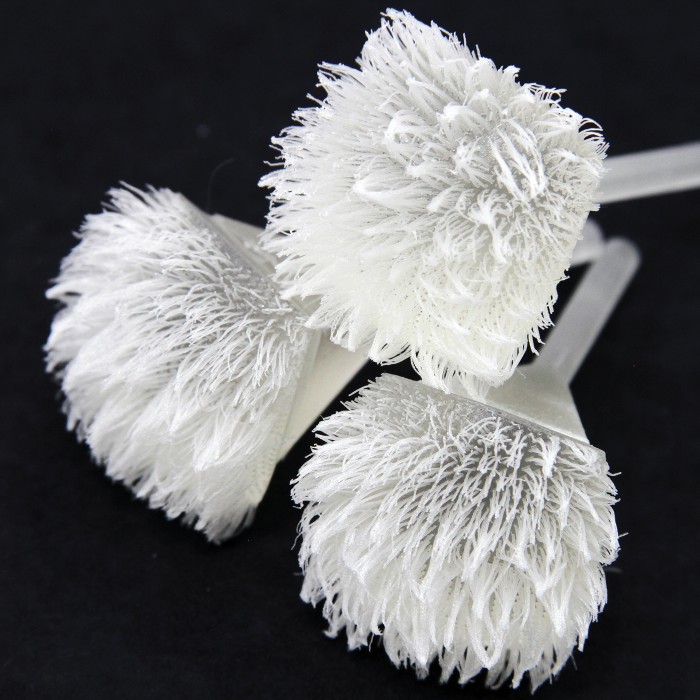Printing Hair
These days, it seems as if 3-D printers can spit out just about anything, from a full-size sports car to edible food to human skin. But some things have defied the technology, including hair, fur, and other dense arrays of extremely fine features, which require a huge amount of computational time and power to design and print.
Now MIT Media Lab researchers have found a way to quickly and efficiently model and print thousands of hairlike structures. Using conventional computer-aided design software would mean drawing thousands of individual hairs on a computer, translating each hair’s contours into a mesh of tiny triangles, and then turning cross sections of that mesh into layer-by-layer pixelated instructions for the 3-D printer to follow, a process that would take hours. The team bypassed all that with a new software platform, called Cilllia, that lets users define the angle, thickness, density, and height of thousands of hairs in just a few minutes.
Using Cilllia, the researchers modeled hairs as cone-shaped stacks of pixels that could be easily rearranged to vary their characteristics. Playing with various dimensions, they designed arrays ranging from coarse bristles to fine fur and then used a conventional 3-D printer to print them onto both flat and curved surfaces.

Could the technology be used to print wigs and hair extensions? Possibly, say the researchers. But they’re more interested in how 3-D-printed hair could be useful in sensing, adhesion, and actuation.
To demonstrate sensing, the researchers printed a small furry rabbit, equipped with LED lights that light up when a person strokes it in certain directions. For adhesion, the team printed arrays that act as Velcro-like bristle pads. Depending on the angle of the bristles, the pads can stick to each other with varying amounts of force.
And to see whether 3-D-printed hair can help actuate, or move objects, the team fabricated a weight-sorting table made from panels of printed hair with specified angles and heights. As a small vibration source shook the panels, the hairs were able to move coins across the table, sorting them according to their weight and the vibration frequency.
Jifei Ou, a graduate student in media arts and sciences, says the work is inspired by hairlike structures in nature, which provide benefits such as warmth, in the case of human hair, and movement, in the case of cilia, which help remove dust from the lungs.
“It’s very inspiring to see how these structures occur in nature and how they can achieve different functions,” Ou says. “We’re just trying to think how can we fully utilize the potential of 3-D printing and create new, functional materials whose properties are easily tunable and controllable.”
Keep Reading
Most Popular
Large language models can do jaw-dropping things. But nobody knows exactly why.
And that's a problem. Figuring it out is one of the biggest scientific puzzles of our time and a crucial step towards controlling more powerful future models.
The problem with plug-in hybrids? Their drivers.
Plug-in hybrids are often sold as a transition to EVs, but new data from Europe shows we’re still underestimating the emissions they produce.
Google DeepMind’s new generative model makes Super Mario–like games from scratch
Genie learns how to control games by watching hours and hours of video. It could help train next-gen robots too.
How scientists traced a mysterious covid case back to six toilets
When wastewater surveillance turns into a hunt for a single infected individual, the ethics get tricky.
Stay connected
Get the latest updates from
MIT Technology Review
Discover special offers, top stories, upcoming events, and more.